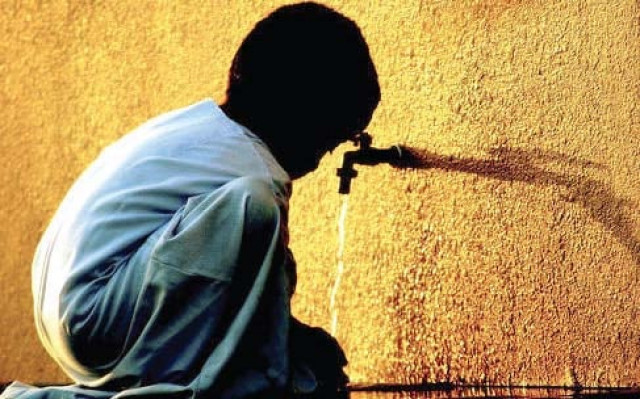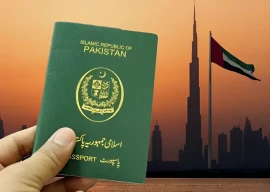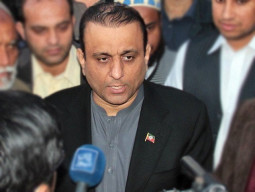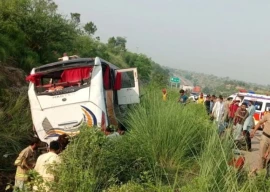
Dur Mohammad has two jobs. While one compensates him for his hard work, for the other – fetching water from a distance of one kilometer – he rarely receives any acknowledgment.
The 23-year-old is a resident of Killi Bangulzai, a suburb in Saryab, Quetta, where growing water shortage has transformed the lives of people, taking them back to the era where hauling buckets of water from a nearby well was a daily routine. “Nobody likes spending a good amount of their time fetching water on a daily basis, but I have to do this for my family,” says Mohammad.
Although a convenient option is available at his doorstep, he cannot afford it. “A full water tanker costs up to Rs500 to Rs600 and lasts a couple of days only. Since I cannot afford to buy water, I prefer the tube-well.”
However, for those who can afford their services, private water tankers are just a call away. Like many other cities in Pakistan, these tankers attempt to fill the demand-supply gap where the government is unable to and often sell water at exorbitant rates.
Apart from Saryab, other towns facing a similar water crisis include Railway Colony, Brewery Road, New Saryab and Satellite Town among other residential areas. “Summers are even worse when water becomes completely scarce,” said Sohail Ahmed, a resident of Railway Colony, criticising the Water and Sanitation Agency for being somewhat efficient in winters only. “These days we conserve water on a day-to-day basis like it is some precious commodity.”
Cashing in on water
However, there are others who are blessed with this natural resource and cash in on the abundant supply of water by installing tube-wells outside their homes and selling water to private tankers.
The tankers transport this water to distant areas, charging residents according to the distance they travel from their source of water supply. “I have over a hundred consumers in various neighbourhoods,” boasts Noor Ali, who supplies water through his personal tanker and charges between Rs400 and Rs600 for the service. For those who question his motives, he immediately quips in: “I don’t get to keep all the money. I also have to pay to the tube-well owners.”
Even though the Water and Sanitation Agency (WASA) is aware of the magnitude of this crisis, they offer no solutions.
Most of the 335 tube-wells they installed in Quetta over the past few years dried up within a few months of the installation. A few months ago, the agency installed 85 tube-wells in Mian Ghundi, of which 15 ran dry. Apart from WASA, some private organisations also installed tube-wells for residents, which remain their source of water supply to date.
When inquired about the business of private tube-wells, Hamid Latif Rana, the managing director at WASA, pointed out that the practice is a clear violation of the law, which was recently approved by the parliament.
“A ban had been imposed on installing tube-wells in residential areas for business purposes, but we have been unable to enforce it,” he admitted. He added that WASA had launched a massive crackdown on tube-well owners and private water suppliers recently, but they had to back off after an agitation by members of the Water Tanker Association. “The incumbent government forced us to end the crackdown,” he disclosed.
Rana not only acknowledges the intensity of the problem but also predicts that “the worst is yet to come.”
“Water crisis is aggravating with each passing day. We need to construct more dams and reservoirs otherwise Quetta will turn into a ghost city after ten years as people are forced to migrate,” he said.
Quetta has a population of 2.5 million people and according to the United Nations Charter the standard requirement for these many people is 150 million gallons per day (MGD). WASA, however, has only been able to provide 40 MGD – much less than the requirement of one-third of the provincial capital.
When wells run dry
Many believe that the Balochistan province has still not recovered from its worst droughts in history which was between 1995 and 2005. This left a great impact on the water table, drying up all the wells and Karez, which were a source of water supply for irrigation as well as domestic use.
“Earlier, water was available at a depth of 40 to 100 feet, but these wells now reach 1,000 feet down,” said Rana. At the present rate, Balochistan’s groundwater will deplete by five to ten feet annually and this, fear officials, could threaten people off the land.
Rana blames the Water Tanker Association for [what he terms] a ‘manmade disaster’. “They are responsible for this rapid decline in the groundwater level. They draw an unlimited amount of water through tube-wells and mostly supply it to commercial areas resulting in an unequal distribution among residents,” he said.
But it is not just the residents who are complaining. Quetta also houses a large military cantonment and the army is equally concerned about the crisis. In fact, during General Pervez Musharraf’s regime, engineers in the army tried to look for other sources of water by puncturing hard rocks. However, this invited severe criticism from environmentalists
Conserving the only option?
Abdul Razaq Khilji, Chairman Geo Scientist Association, believes the government lacks the motivation to resolve the crisis. “I do not see any serious steps being taken to restore the groundwater level in Quetta valley nor does the government acknowledge the importance of reservoirs,” he told The Express Tribune.
He added that if a proper conservation strategy is not swiftly adopted, this crisis will only get worse for the upcoming generation.
Rana, however, sounds promising and offers some hope. Listing some of WASA’s future projects, he said that the government has allocated Rs100 million for the construction of two storage dams in Quetta. The dams are expected to be built within five months and would enable WASA to provide an additional amount of 400 MGD to residents of the province.
A project is also underway for installation of water treatment plants which would help recycle water to be used for irrigation purposes. Similarly, some 23 water supply schemes have also been approved for the next financial year.
“While all these schemes will prove to be helpful, I believe we need to focus on building dams only,” said Rana. “Back in 1988, an expert predicted that there will be huge water crisis in Quetta in 2003,” he recalled, “although we dealt with that crisis by restoring water in the mountainous region, this will not be possible again. We need to preserve water to prevent the worst.”
(Edited by Saarysh Zuberi and Aroosa Masroor)
Published in The Express Tribune, September 14th, 2011.


















COMMENTS
Comments are moderated and generally will be posted if they are on-topic and not abusive.
For more information, please see our Comments FAQ